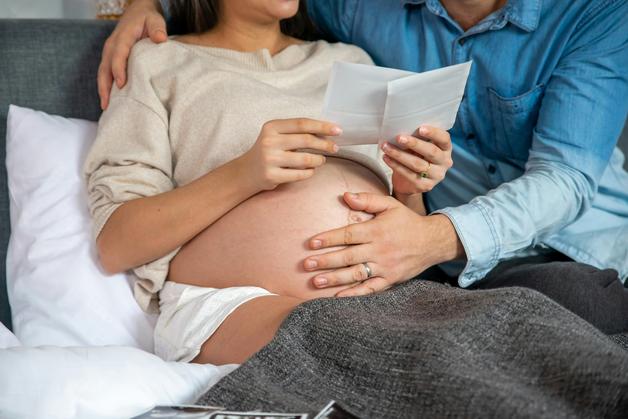From the first fluttering signs of discomfort to those relentless aches that seem to shadow every movement, pregnancy aches announce themselves with an unpredictable persistence. Many parents find themselves asking the same questions. Where do these strange twinges come from? Is that sharp pang in your hip simply the norm, or does it call for immediate attention? Right beneath these daily challenges, your body is orchestrating radical transformation—stretching ligaments, shifting posture, swelling joints, recalibrating every system to nurture new life. Fatigue creeps in, muscles protest, yet reassurance is often buried beneath a mountain of mixed advice and uncertainty. This is a season of both anticipation and relentless adaptation, where the drive to protect and comfort takes center stage. Let’s break down why pregnancy aches happen, when to worry (or not), how to relieve them, and how to face this journey with confidence and medical insight—using what science and lived parental experience have revealed.
What Are Pregnancy Aches?
Pregnancy aches are rarely predictable. They range from dull soreness tracing your spine to leg cramps hijacking your sleep, from electric flashes of round ligament pain as you shift position to the quiet discomfort of swelling wrists. The term itself is a medical umbrella—encompassing muscle tightness, cramps, pressure, and joint discomfort that travel from your lower back and hips to your shoulders and neck, sometimes dragging along tingling or numbness. What causes this kaleidoscope of sensations? The answer sits at the intersection of hormonal surges (particularly the hormone relaxin, which softens ligaments), increased blood flow, and the physical demands of carrying extra weight.
Yet, it’s not only about biology. Emotional stress, disrupted sleep cycles, and even nutritional gaps (especially low calcium and magnesium) can amplify symptoms. Knowledge of these underlying mechanisms gives you more than comfort—it restores a sense of agency. Are pregnancy aches simply a parental rite of passage? In the majority of cases, yes. They reflect the body’s blueprint for adaptation—not an underlying pathology.
Typical Aches and Where They Strike Most
Back Pain: The Relentless Companion
Imagine your lower spine carrying the shifting stage of a growing uterus. Expect to feel lumbar soreness and tension, exacerbated by a change in posture and a softening of pelvic ligaments. For some, pain radiates down into the buttocks or thighs. If you lean over a highchair or log extra hours at a desk, the discomfort accumulates like knots in a rope.
Leg and Calf Pain: Nightly Visitors
Do you suddenly wake, legs locked in an involuntary spasm? Leg cramps are notorious for striking after dark, fueled by changes in circulation, increased weight bearing, and even subtle deficits in essential minerals. The sensation may resemble post-exercise fatigue, or a dull restlessness making it impossible to keep still.
Pelvic and Hip Discomfort: Expanding Frontiers
With each trimester, your pelvis widens, your posture shifts, and the supporting muscles work overtime. This is the domain of round ligament pain, which may surface as abrupt stabs of discomfort when you stand or twist. Prolonged sitting or sudden movement are repeat offenders.
Shoulders, Neck, and Beyond: Tension Accumulates
Toward evening, toppled by poor posture or the weight of the day, your shoulders and neck may tense up, sending waves of tightness creeping upward. Not merely a nuisance, it speaks to joint instability throughout the body—part of a widespread physiological remix orchestrated by pregnancy hormones.
Other Frequent Symptoms
- Abdominal stretching and transient cramping, associated with the round ligament as it lengthens rapidly
- Breast sensitivity and swelling, peaking at the bookends of pregnancy
- Transient aches or tingling in the wrists or hands (carpal tunnel syndrome), due partly to fluid retention compressing nerves
- Mild headaches or migraines—often linked to hormonal shifts or disrupted sleep
- Hemorrhoidal discomfort—an often-unspoken but common effect of increased rectal vein pressure
Why Do Pregnancy Aches Occur? A Physiological Deep Dive
The Hormone Factor
Behind the scenes, relaxin and progesterone work as chemical architects, softening tissues and loosening joints in preparation for delivery. The tradeoff? Stability decreases, and overworked muscles pay the price. The very hormones safeguarding childbirth invite aches and vulnerability—especially in the lower back, pelvis, and hips.
The Mechanics: Weight, Posture, and Muscle Load
Rising uterine weight shifts the body’s center of gravity, subtly tilting you forward. Spinal curvature increases, and the core muscles—already stretched to their limits—struggle to compensate. Concurrently, poor posture, static standing, or ill-adapted seating can pile on extra pain, emphasizing the importance of ergonomic comfort.
Circulatory and Nutritional Contributors
A surge in blood and interstitial fluid volume, common in pregnancy, leads to swelling (edema) and compresses peripheral nerves, especially in the wrists and lower legs. Mineral imbalances—notably low magnesium or calcium—predispose to night cramps or increased muscular excitability.
Fatigue and Sleep: When Aches Peak
Restless nights, frequent awakenings, and cumulative fatigue heighten vulnerability. Muscles stiffen. Soreness spreads. If waking up leaves you feeling like you’ve run a marathon in your sleep, know that disrupted rest is a notorious trigger for increased pregnancy aches.
Pregnancy Aches by Trimester: A Timeline
First Trimester
A wave of diffuse, low-grade muscle aches, combined with breast tenderness and sporadic headaches, reflects the effects of acute hormonal changes. Early uterine growth triggers light cramping and sometimes digestive shifts as well.
Second Trimester
Here, pain tends to localize. Round ligament discomfort emerges, prompted by sudden movement. Back and hip tension surface as posture starts to adjust more markedly. Some may encounter wrist tingling—symptoms of carpal tunnel due to fluid retention.
Third Trimester
As the finish line approaches, the body contends with maximum weight, the greatest degree of joint relaxation, and chronic sleep disruption. Pronounced back and hip pain, sciatica, leg cramps, persistent swelling, insomnia, and upper body tension come to the fore, highlighting the peak complexity of pregnancy aches.
When to Worry? Warning Signs and Red Flags
Not all pregnancy aches are benign. Medical supervision becomes paramount if you experience:
- Persistent, severe, or one-sided pain, especially if unresponsive to rest
- Regular uterine contractions (before 37 weeks)
- Significant, asymmetric swelling—especially with redness or unusual warmth in a limb
- Fever, chills, or new neurological signs (such as muscle weakness)
- Unexplained bleeding or sudden decrease in fetal movements
- Severe headaches, blurred vision, or dizziness after 20 weeks
- Chest pain, shortness of breath
- Painful urination
Such warning signs may indicate pre-eclampsia, venous thrombosis, or infection, necessitating immediate evaluation to protect both the birthing parent and their unborn child.
Effective Strategies for Relieving Pregnancy Aches
Gentle Movement and Stretching
Is the idea of moving daunting? Ironically, gentle stretching at the start and end of the day is often your ally—delivering oxygen, reducing micro-tears, and lowering inflammation. If possible, incorporate prenatal yoga, aquatic exercises, or simple walks, all while respecting your individual boundaries and always after professional approval.
Water’s Therapeutic Embrace
Swimming envelops your joints in supportive buoyancy, soothing muscle soreness while reducing gravitational strain. Warm (never scalding) baths or heating pads can further ease muscle tightness. Remember: for swelling, cold compresses are more effective.
Massage and Physical Therapy
Nothing compares to skilled, targeted support. Prenatal massage, provided by certified professionals, unlocks deep tissue relaxation, while pelvic floor physical therapy addresses root causes of pelvic and back pain. Consult your healthcare provider for recommendations.
Footwear and Posture: Momentum Matters
Good footwear matters. Shoes featuring solid arch and heel support distribute pressure, minimizing impact on lower limbs. Likewise, using lumbar-support cushions and ergonomically adapted seating can be transformative.
Sleep Support
Quality sleep remains elusive for many. Prioritizing rest—side-lying posture with a pillow nestled between knees—spreads weight evenly and decompresses joints. Short naps and regular breaks, even ten minutes at a time, can refuel depleted muscles.
Dietary Defenses
A balanced diet protects far beyond the obvious. Frequent intake of magnesium-rich foods (nuts, seeds, spinach) and calcium (dairy, tofu, leafy greens) supports neuromuscular function, while sufficient hydration (1.5 liters or more daily) combats cramps and swelling.
Safe Medication
Acetaminophen (paracetamol) remains the go-to for moderate discomfort, but dosages should always align with healthcare guidance. Anti-inflammatory agents (NSAIDs) like ibuprofen generally require extra caution due to risks, especially later in pregnancy.
Professional Interventions
Persistent or localized aches deserve a trained eye. Physical therapists, midwives, or pain specialists can adapt manual therapies and exercises for your evolving needs, offering reassurance when uncertainty takes hold.
Preventive Measures for Minimizing Pregnancy Aches
Ergonomics and Everyday Tactics
Embracing posture support—standing tall, adjusting workspace ergonomics, choosing firm chairs—becomes a potent shield. Practice safe lifting, evenly distributing weight and bending at the knees. Regularly alternate between sitting, standing, and gentle activities. Above all, remain attuned to the first signs of discomfort—listen, adapt, and allow your body space to recover.
The Emotional Layer Behind Pregnancy Aches
Chronic aches can infiltrate every aspect of emotional well-being—disrupting sleep, feeding anxiety, coloring perceptions of self-efficacy. Open communication with family and health professionals, carving out moments for self-compassion, and setting boundaries on activity all contribute to protecting mental health. Parenting, after all, is as much about tending to oneself as it is about caring for someone else.
Relying on a support system—friendships, family, support groups—matters. Sometimes, simply sharing your experience re-centers perspective and relieves invisible tension. Regular checkups also provide a valuable touchpoint for voicing concerns over mood or persistent sadness, framing mental health as a non-negotiable element of prenatal care.
Key Takeaways
- Pregnancy aches, while often uncomfortable, usually signal your body’s remarkable adaptation to hormonal and postural evolution.
- Preventive and relief strategies range from gentle stretching, movement, swimming, massage, and supportive sleep routines to a balanced, mineral-rich diet and hydration.
- Some discomfort is normal—however, persistent severe pain, troubling swelling, new neurological symptoms, or unusual bleeding require prompt medical attention.
- Vigilance, clear communication, and strategic self-care allow parents to manage discomfort and maintain emotional resilience throughout pregnancy.
- Parenting resources and knowledgeable healthcare professionals are key allies in your journey—never hesitate to reach out.
- For ongoing support, tailored advice, and easy-to-use health questionnaires throughout pregnancy and parenting, consider downloading the Heloa app—a helping hand for those parenting milestones, offering expert-backed guidance each step of the way.
Questions Parents Ask
Can pregnancy cause flu-like body aches?
Yes, feeling body aches similar to those experienced during the flu can happen during pregnancy, especially in the early stages. These aches are often linked to hormonal changes and your body’s natural adaptation to support the developing baby. While some fatigue and mild body discomfort are common, if you also notice fever, chills, or other flu symptoms, it is important to seek medical advice for reassurance and to rule out any infections.
Is lower belly pain normal in early pregnancy?
Lower abdominal discomfort, sometimes resembling menstrual cramps, is quite common in the first weeks of pregnancy. This sensation is typically due to the uterus adjusting and muscles gently stretching. Rassurez-vous, this is usually harmless and reflects changes your body is making. However, if the pain becomes sharp, severe, or is accompanied by bleeding, consultation with a healthcare provider remains essential.
Are body aches normal throughout the third trimester?
Absolutely. Many parents notice an increase in muscle aches and soreness as pregnancy advances, especially during the third trimester. The growing size of the baby and additional weight can put more pressure on joints, muscles, and ligaments. These sensations are a natural response to the physical demands of late pregnancy. If aches are persistent or truly intense, don’t hesitate to discuss them with a health professional for support and advice tailored to your situation.

Further reading:







